- Home
- slideshows
- miscellaneous
- The best DSLR cameras you can buy
The best DSLR cameras you can buy
The best DSLR camera overall

The best mid-range DSLR camera
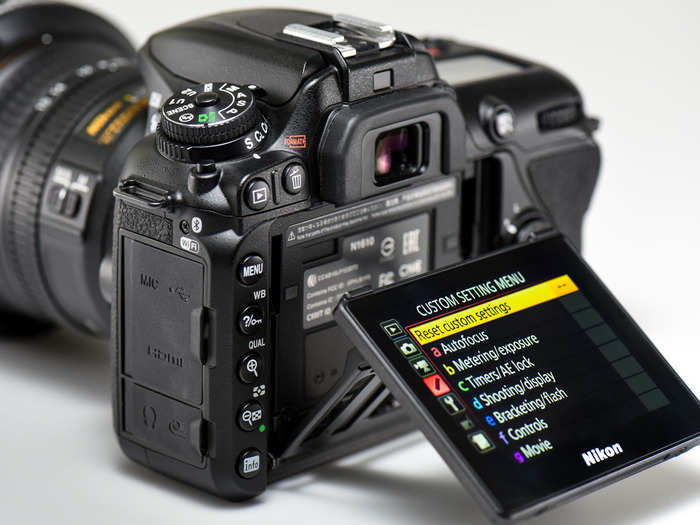
If you have a bit of experience with photography and don’t want your first DSLR to be an entry-level model, the Nikon D7500 is our favorite intermediate-level camera. It fits perfectly into this area of the DSLR market, offering much of what higher-end cameras do, but at a price point well below their price point.
As Digital Photography Review discusses in its Nikon D7500 review, this camera offers the highest quality in the market among DSLRs with APS-C sized image sensors. It provides 20.9 megapixels of resolution, which is more than enough for most beginner and intermediate photographers.
It's worth noting that our previous pick, the D7200, offered 24.2 megapixels, which is much more comparable to other DSLRs in this price range. The big tradeoff is that you do get 4k video with the D7500. All in all, 20.9 megapixels is just fine for most anyone and even some professionals, so long as you're not doing heavy cropping or printing large posters.
Steve’s Digicams' D7500 review highlights the excellent viewfinder build quality that was also found in our previous pick. For those who have used film cameras in the past, the viewfinder was a key component to framing photographs.
Photographers often are disappointed to find no viewfinder on a simple digital camera or on a smartphone camera. So having a high-quality viewfinder in the Nikon D7500 is a great feature. — Kyle Schurman and Owen Burke
Pros: Great image quality on APS-C sized image sensor, excellent performance in low light, buttons are well placed for ease of use, lightweight DSLR body, excellent viewfinder quality
Cons: No 4K movie recording option, autofocus system is a little slow in some situations, two-year-old design
Buy the Nikon D7500 (camera body only) on Amazon for $1,146.95 Buy the Nikon D7500 with a mid-range kit lens on Amazon for $1,446.95The best DSLR camera for beginners
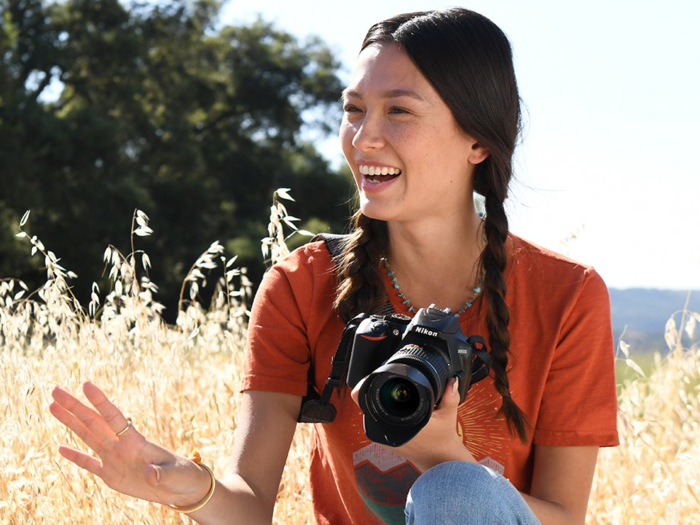
One thing we really like about the D3500 — and all Nikon cameras, for that matter — is its user-friendliness. Nikon is widely known and appreciated for making easy-to-use cameras, which alone earns it a large, loyal fan base.
But just because it's easy to use doesn't mean it's necessarily a limiting camera. Sure, you can't shoot 4k video, and there's no swivel or vari-angle screen, so capturing video or stills using the rear display at tough angles is more or less out of the question.
The D3500 does come with a respectable 11-point autofocus and a 5fps burst shooting speed, which makes some other competitively-priced cameras seem sluggish in comparison.
Another huge benefit of this camera, especially when compared with mirrorless cameras, is its battery life. Because the D3500 relatively low-tech, it doesn't burn up as much power and can fire off about 1,500 shots before you run out of charge. In contrast, higher-tech DSLRs and most mirrorless cameras tear through a battery in several hundred shots.
TechRadar calls the D3500 "a great entry into the world of photography," and it's relatively new, but 30 reviews on Amazon have earned it a 4.6-star rating. After a steady month of testing, we don't know of a better camera at this price point, and certainly not a full kit that stacks up for under $500. As far as we're concerned, this is the best entry-level DSLR you can buy. — Owen Burke
Pros: Low price, easy-to-use camera, excellent battery life, faster burst shooting speed and more autofocus points than the competition
Cons: No 4K video recording option, no swiveled (aka articulated) rear display, not enough advanced features for experienced photographers
Buy the Nikon D3500 with a VR-Nikkor lens kit and other accessories for $459 (recommended) Buy the Nikon D3500 with an 18-55mm VR-Nikkor kit lens for $396.95The best high-resolution DSLT camera
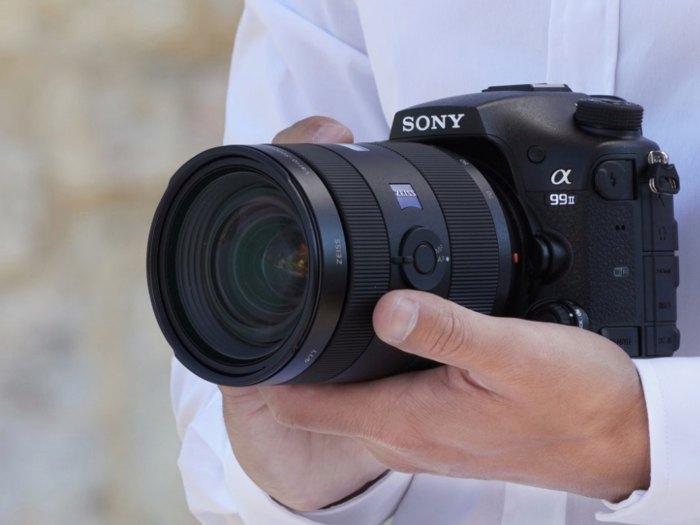
Unlike the rest of the cameras in this guide, Sony's A99 II is a DSLT (Digital Single Lens Translucent). You're surely familiar with DSLR cameras, but what's a DSLT? In short, you might think of it as a hybrid between a DSLR and a mirrorless camera.
At length, the "T" stands for translucent in reference to the mirror, because it uses "Translucent Mirror Technology," which, in plain terms, means the mirror is translucent and fixed. The mirror allows about 70% of the light your shutter lets in through to the sensor and the remaining 30% or so up to the phase detection autofocus sensor. On a DSLR camera, the "R" stands for reflex (also in reference to the mirror), and the mirror pops up to let light hit the sensor when you fire a shot.
The difference in practical terms? You've got one less moving part, so you can shoot more frames per second, and because the reflex mirror in DSLRs moves, it creates vibration, affecting image quality.
In its Sony A99 II review, Photography Blog points out the excellent image and video quality this camera can obtain. It offers a full-frame image sensor with an impressive 42.4 megapixels of resolution, allowing it to create amazing images. Because it’s a relatively new camera, Sony has included a maximum video resolution of 4K, which makes it a strong video camera, too.
As Digital Photography Review mentions, the A99 II is able to give advanced photographers all of the manual control options they could ever need. This means photographers can use a collection of camera settings that will yield the best results, even in tough shooting conditions such as low light. It’s a great all-around camera, in addition to offering a high-resolution count.
Burst mode performance is another area where the A99 II excels, as it can record up to 12 frames per second at a full 42.4 megapixels of resolution.
Because the Sony A99 II carries a really high price point, you’re going to want to make sure you have enough photographic experience to take full advantage of its feature set. If you feel like your skills are ready for a camera of the A99 II’s level, few cameras on the market can match its still image and video recording quality.
User reviews on Amazon are few, but largely positive, and The Huffington Post's review agreed that it's a great high-end DSLR. — Kyle Schurman and Owen Burke
Pros: Extremely high resolution, fast burst mode performance, good battery life, offers 4K video recording, image quality is outstanding, good ergonomic design and placement of buttons
Cons: High price, autofocus system is a little slow and difficult to use
Buy the Sony A99 II (camera body only) on Amazon for $3,198The best DSLR camera for sports photography
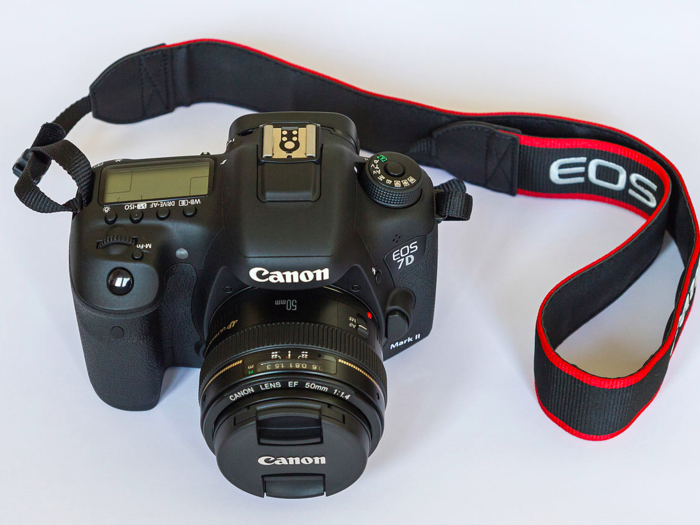
Even though the Canon EOS 7D Mark II DSLR camera is a couple of years old, it remains Canon’s fastest performing camera with an APS-C sized image sensor. This is a slightly smaller image sensor in terms of physical size than you’ll find with some other DSLRs (such as full-frame image sensors).
However, for beginner photographers, an APS-C sized sensor with 20.2 megapixels of resolution delivers more than enough image quality to meet their needs. Only experienced photographers will be wishing for more resolution. By offering this level of performance in an APS-C image sensor DSLR, Canon is able to sell the 7D at a mid-range price point.
As explained in Photography Life’s review of the 7D Mark II, you’ll be able to capture those fast-moving subjects successfully with this DSLR’s incredibly fast burst mode. The Imaging Resource rates the 7D Mark II as a perfect five stars, thanks to excellent image quality, its fast autofocus system, and its fast burst mode performance.
The 7D’s video recording capabilities are better than average, too, which contributes to its ability to capture sports and wildlife scenes. You can record Full HD video at up to 60 frames per second, and the 7D Mark II includes a 3.5mm microphone jack, as well as a headphone jack to ensure a strong audio signal.
If you really want to step up your sports photography, or are looking to go pro, the Canon 1DX Mark II is tops (mind you, it's also more than $5,000).
The Canon 7D Mark II is just a little too old to incorporate 4K video recording, which is a slight disappointment in an otherwise strong DSLR.
TechRadar, PocketLint, CNET, and PC Mag all gave it good scores, and user reviews on Amazon are also positive.
Pros: Fast burst mode capabilities, excels for sports and wildlife photography, good video recording options, fast autofocus system, good mid-range price point
Cons: Cannot record in 4K video, slightly older design, only 20.2 megapixels of resolution
Buy the Canon EOS 7D Mark II (camera body only) on Amazon for $1,499 Buy the Canon EOS 7D Mark II with a mid-range kit lens on Amazon for $1,949 Buy the Canon 1DX Mark II (body only) on Amazon for $5,499Check out our guide to the best mirrorless cameras
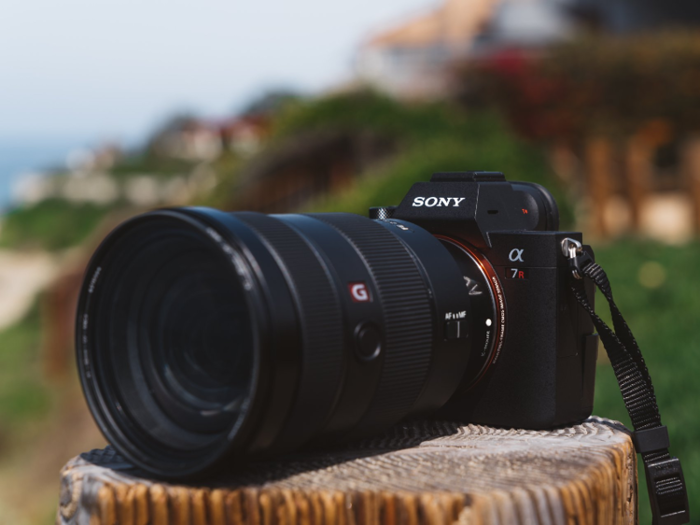
Mirrorless cameras may be smaller than DSLRs, but they give you many of the same benefits, including great image quality, fast performance levels, and versatility in interchangeable lenses.
We've done the research (and some testing) to bring you the best mirrorless cameras you can buy. Read on to see which one is best for you.
Here are the best mirrorless cameras you can buy:- Best mirrorless camera overall: Fujifilm X-T20
- Best high-end mirrorless camera: Sony A7R III
- Best mirrorless camera for video: Panasonic Lumix G85
- Best mirrorless camera on a budget: Olympus OM-D E-M10 Mark II
- Best mirrorless camera with the most lenses: Canon EOS M6
Popular Right Now
Popular Keywords
Advertisement